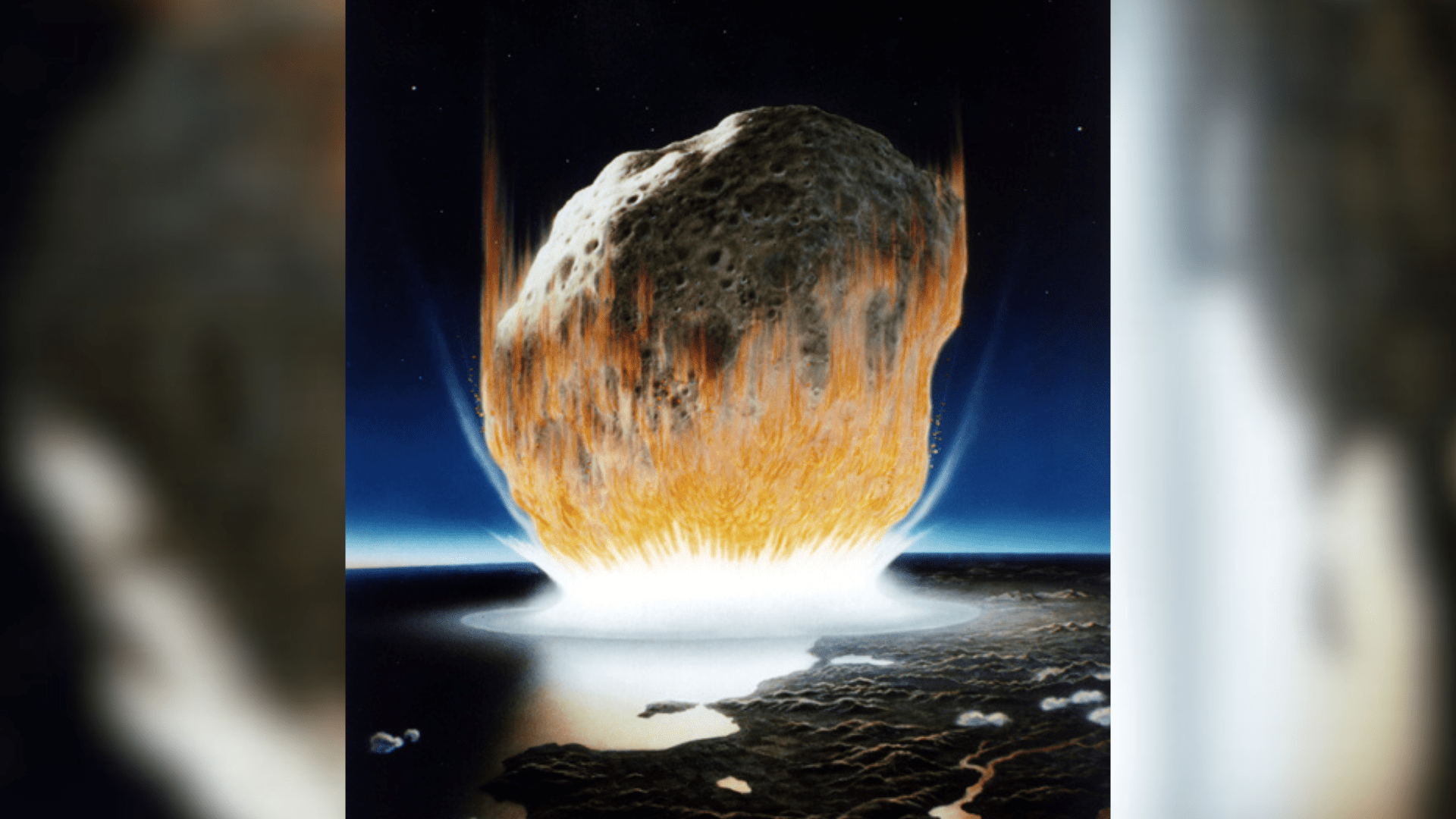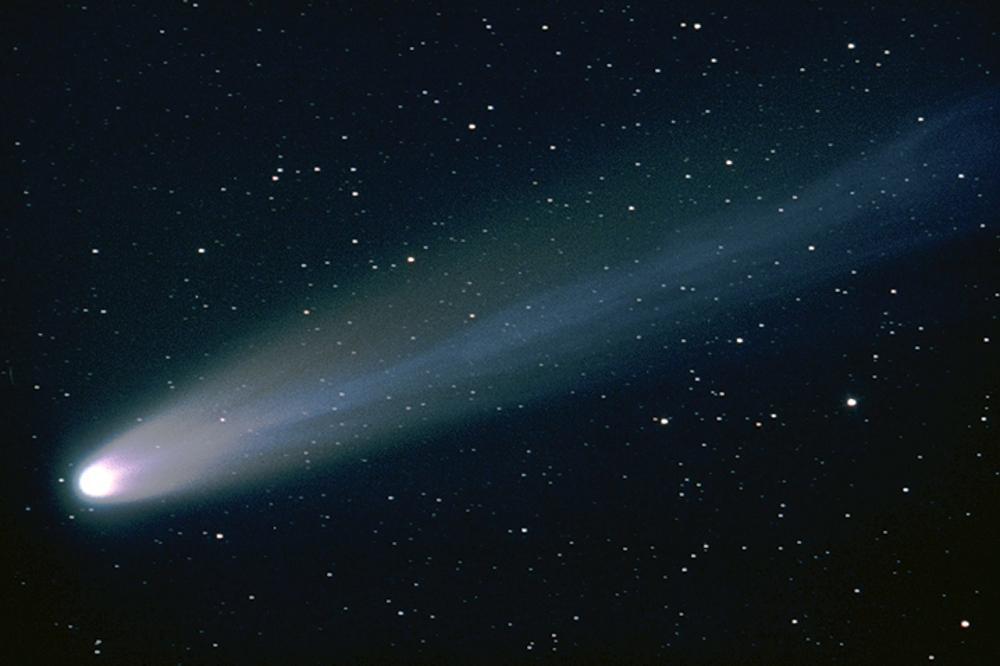A Mysterious Structure Discovered Deep Beneath Australia Has Left Researchers Puzzled
Scientists are left puzzled after discovering an unusual structure buried deep beneath the ground in Australia. This finding has left researchers questioning the history of the Earth.
The researchers believe they have found evidence of a crater left behind by an ancient asteroid that could be more than three times the size of the one that led to the extinction of dinosaurs millions of years ago.
The Extinction of the Dinosaurs
Dinosaurs roamed our planet for millions of years before an asteroid crashed into Mexico’s Yucatan Peninsula. The asteroid left behind the Chicxulub crater and ultimately caused a mass extinction of the large animals.

Source: Wikimedia
For many years, researchers referred to this crater as one of the largest on Earth. With it came one of the most devastating mass extinctions of living creatures ever. Now, scientists are left in shock after discovering an even larger crater buried beneath Australia.
The Discovery in New South Wales
Researchers working in New South Wales, Australia, revealed they have found evidence of an enormous asteroid impact in the region, which could be the largest to ever smash into our planet.

Source: Brook Mitchell/Getty Images
However, according to the researchers, the crater is buried deep beneath the Australian continent.
The Deniliquin Structure
Following their discovery, scientists have since named the enormous crater the Deniliquin structure.

Source: Britannica
While it hasn’t been fully excavated yet, those working at the site claim it is buried underneath millions of years of sediment and could potentially measure around 520 km in diameter, per The Independent.
The Impact of the Asteroid
Based on initial predictions, it is thought that the asteroid that created the Deniliquin structure could have been around 10 kilometers in size.

Don Davis, NASA/Wikimedia Commons
This has allowed researchers to suggest that the energy upon impact may have been equivalent to around 100 million megatons of TNT, which is about 1000 times more powerful than the atomic bomb dropped on Hiroshima.
Destruction Following Impact
The energy released on impact after crashing into the Earth likely sent seismic waves across the planet. The explosion itself would have led to widespread fires, deadly tsunamis, and a plethora of other natural disasters.

Source: Matt Howard/Unsplash
According to researchers, the dust and debris thrown into the air likely blocked out the sun, affecting the Earth’s climate.
The Largest Crater on Earth
As things currently stand, the largest crater created by an asteroid is the Vredefort crater found in South Africa. The enormous impact structure is an astonishing 300 km wide.

Source: Wikimedia
However, after initial inspections, researchers have suggested that the crater in Australia could be around three times the size of the Chicxulub crater and over 200 km larger than South Africa’s Vredefort impact structure.
An Ancient Asteroid Hits Earth
The lead author of a new study, Andrew Glikson, who currently works as an adjunct professor at the University of New South Wales, shared his thoughts on the origin of the ancient asteroid.

Source: Wikimedia
According to the researcher, the impact may have occurred as much as 420 million years ago. However, his team admits they have yet to discern just what the consequences of such an impact may have been.
Unknown History of Asteroid Impacts
Researchers have a difficult time finding impact craters, as they are often buried beneath sediment collected over millions of years. This means the history of asteroids smashing into Earth is largely undocumented.

Source: Wikimedia
“The history of Earth’s bombardment by asteroids is largely concealed,” Glikson wrote, alluding to the idea that there could be even larger impact structures buried beneath the Earth.
Early Proposal of the Deniliquin Structure
While the Deniliquin structure’s existence was confirmed in 2020, researcher Tony Yates, who participated in the recent study, proposed it as far back as the late 1990s.

Source: Wikimedia
The work of Glikson, Yates, and everyone else involved in the recent study confirmed their initial assumptions: Deep beneath the continent of Australia lies the proof of an ancient asteroid crater that could help them better understand our ancient past.
How Did the Crater Get Buried?
In a written piece, Glikson explained how an enormous crater came to be buried beneath Australia’s landmass.

Source: Freepik
“When an asteroid strikes, it creates a crater with an uplifted core. This is similar to how a drop of water splashes upward from a transient crater when you drop a pebble in a pool,” explained Glikson.
Researcher Speaks on the Uplifted Dome
In an article published by The University of New South Wales, Glikson explained why an uplifted dome is one of several key characteristics that can provide evidence of large-impact structures.

Source: Wikimedia
This central uplifted dome is a key characteristic of large-impact structures. However, it can erode over thousands to millions of years, making the structure difficult to identify,” he said.
Erosion of the Dome
Glikson continued, “This central uplifted dome” will erode over millions of years and eventually become a less prominent landscape feature.

Source: Wikimedia
The researcher suggested that sediment alone could bury the enormous crater. However, he explained that a collision between two tectonic plates deep beneath the surface of the Earth could also subsume the impact crater.
Evidence of the Crater
In addition to the evidence of a large dome buried beneath the New South Wales landscape, the researchers explained several other reasons that suggest the structure is, in fact, an asteroid crater.

Source: Wikimedia
This includes symmetrical ripples in the Earth’s crust that often appear at sites subject to extreme temperatures following an asteroid impact. Researchers have also noticed “radical faults” that appear at other impact sites.
The Deniliquin Structure Has All of the Features Associated With Asteroid Impacts
According to Glikson, he firmly believes the Deniliquin structure contains all of the tell-tale signs of an asteroid impact.

Source: Brook Mitchell/Getty Images
“For instance, magnetic readings of the area reveal a symmetrical rippling pattern in the crust around the structure’s core. This was likely produced during the impact as extremely high temperatures created intense magnetic forces,” he wrote.
Scientist Admits Drilling Will Be Required
According to Glikson, at the moment all of the evidence they’ve collected on the Deniliquin structure has come from the surface. He claims that in order to find “proof of impact,” they will have to drill deep into the ground.

Source: Freepik
The team will continue to work at the site in the following years, hoping to gather more information on the crater’s origins.
Physical Evidence of Shock
The researcher further explained that the bulk of the evidence was collected using geophysical methods.

Source: Freepik
He continued, however, “For proof of impact, we’ll need to collect physical evidence of shock, which can only come from drilling deep into the structure.”
Research Suggests Impact Occurred Over 440 Million Years Ago
Nonetheless, the research conducted at the Deniliquin site so far has led Glikson to predict that the impact occurred around 445 million years ago. This suggests that it coincided with the Late Ordovician mass extinction event, which resulted in the extinction of 85% of life on Earth.

Source: Wikimedia
According to Glikson, this event was twice as powerful as the Chicxulub impact that wiped out the dinosaurs. Going forward, the researchers will aim to prove the Deniliquin impact led to the Late Ordovician mass extinction event.
Older Than the Hirnantian Event
Glikson also theorized that the Deniliquin structure could be older than another separate event that occurred over 500 million years ago.

Source: iStock
“It is also possible the Deniliquin structure is older than the Hirnantian event and may be of an early Cambrian origin (about 514 million years ago),” he wrote.
Twice as Powerful as the Chicxulub Impact
Glikson highlighted the striking force of the impact, claiming that the event that led to the creation of the Deniliquin structure was twice as powerful as the Chicxulub impact that wiped out the dinosaurs.

Source: Freepik
Going forward, the researchers will aim to prove the Deniliquin impact led to the Late Ordovician mass extinction event.
The Next Step
Speaking on what’s next for the researchers working at the Deniliquin impact structure, Glikson revealed they will set out to drill down into the structure and carry out further tests.

Source: Freepik
“The next step will be to gather samples to determine the structure’s exact age. This will require drilling a deep hole into its magnetic center and dating the extracted material,” he said.
The Vredefort Crater
The discovery of the Deniliquin structure has increased interest in such sites around the world, including the famous Vredefort crater in Johannesburg, South Africa.

Source: Wikimedia
According to NASA, “About two billion years ago, an asteroid measuring at least 10 kilometers across hurtled toward Earth. The impact occurred southwest of what is now Johannesburg, South Africa, and temporarily made a 40-kilometer-deep and 100-kilometer-wide dent in the surface.”
The Greatest Extent of the Vredefort Crater
Researchers have theorized that at its greatest extent, the Vredefort Crater may have measured as much as 300 km wide. However, after two billion years of erosion, it’s difficult to surmise just how large it once was.

Source: MODIS Land Rapid Response Team/Wikimedia Commons
“If you consider that the original impact crater was a shallow bowl like you would serve food in, and you were able to slice horizontally through the bowl progressively, you would see that the bowl’s diameter will decrease with each slice you take off,” said Roger Gibson of the University of the Witwatersrand and an expert on impact processes. “For this reason, we are unable to categorically fix where the edge now lies.”
The Largest Crater in the World
Before the discovery of the Deniliquin structure, the Vredefort Crater held the uncontested record for the largest impact crater in the world.

Source: Wikimedia
However, if Glikson and his team prove that Australia’s Deniliquin structure is larger, it would take the number one spot.
